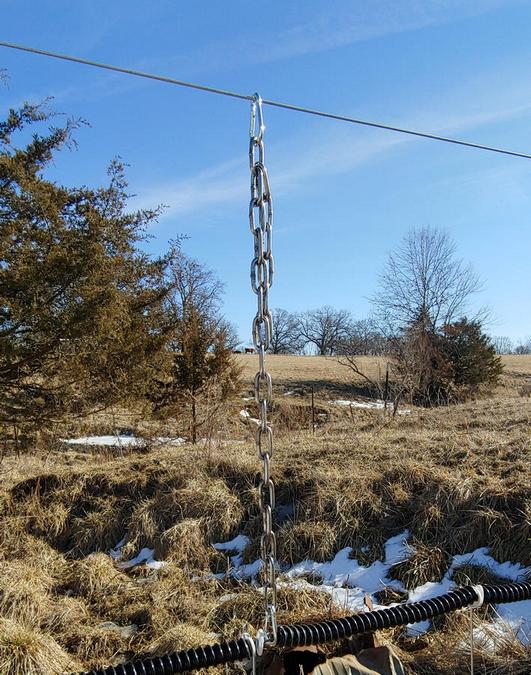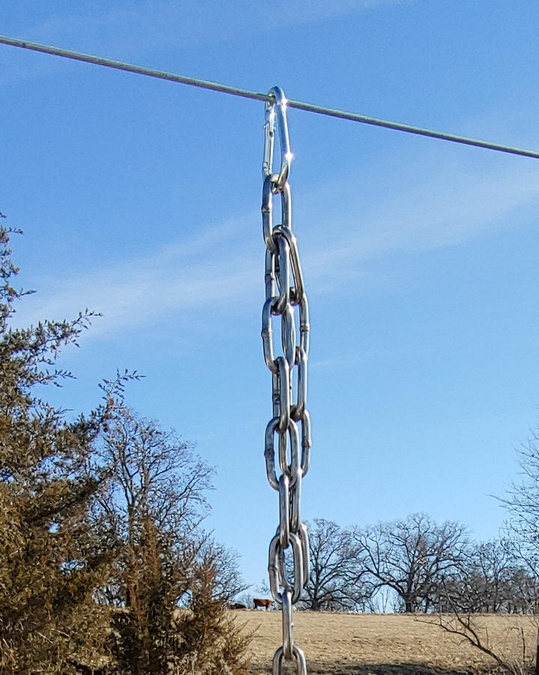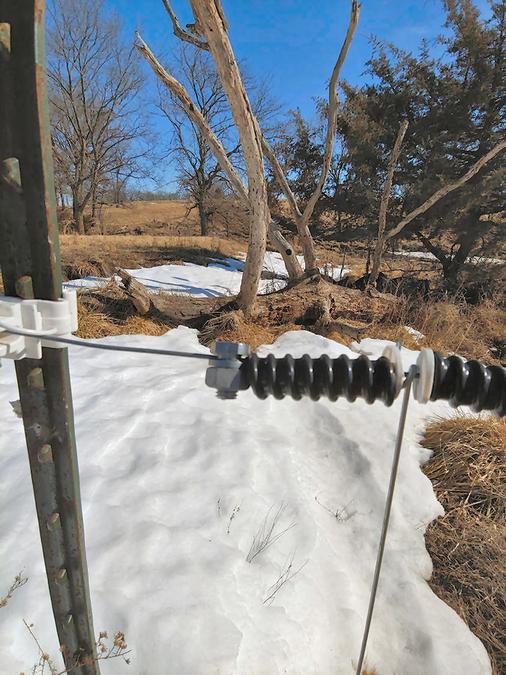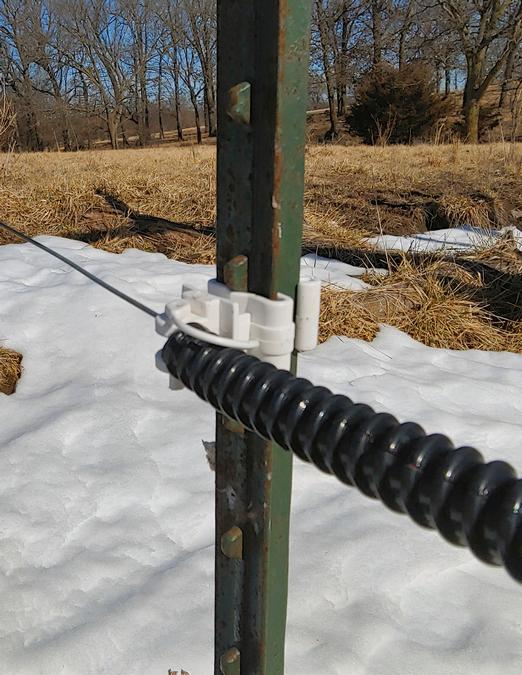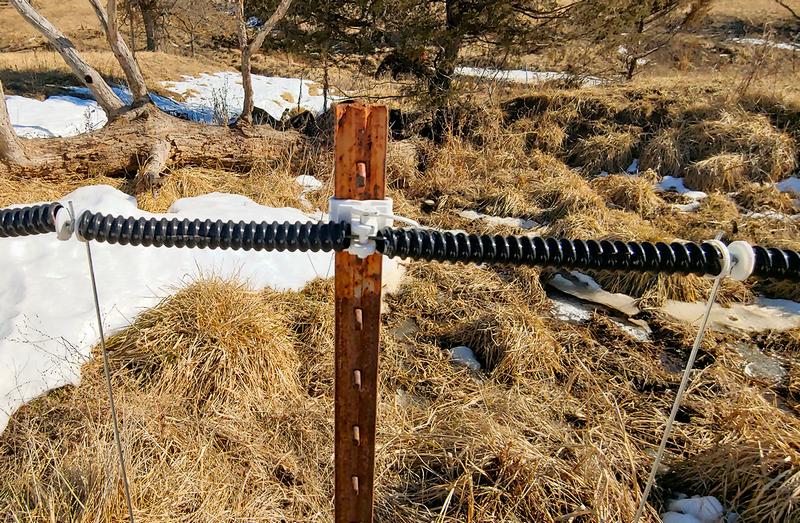
|
Navigation: Milligan Creek Ag - Main Page > Products > Quick Electrified Water Gap Kits™ FAQ, Tips, and Ideas |
Jump to... Prev Top Next More |
(*FAQ = Frequently Asked Questions)
We can custom make a kit for you with any spacer length. Just email us at info@mcreekag.com to get a price quote.
|
Our kits span 6 feet of water gap width for the simple reason that 6 feet is the smallest width in which a whole number of our water gap components will fit: seven spacers, seven droppers ( So, selling kits in 6-foot increments lets us be more efficient in assembling and shipping them. When ordering our kits, simply order the number of 6-foot kits you need to span the width of your water gap; for example, you would order four kits to span a 24-foot wide water gap. |
Our kits average only about 5 ounces of weight per foot of width, so a standard 12.5 gauge high-tensile fence wire can support them easily, even for fairly wide water gaps. However, any amount of weight hanging on a wide enough span of wire will make it sag a bit. If the amount of sag is objectionable, you have several options for dealing with it. ❑Tighten the fence wire. If the wire is looser than it should be, tightening it may reduce sagging by a significant amount. ❑Shorten ❑Add a stringer—a vertical wire or chain connecting the bottom fence wire (the wire where the water gap kit is installed) with the wire(s) above it, letting multiple wires share the weight of the water gap kit.
▪Stringers should not be wrapped tightly around the wires. The best approach is to use spring clips, snap hooks, or quick links to connect the stringer to the fence wires. This lets the wires move independently of each other—as when tightening one of the wires, or when a wire must be disconnected for making repairs somewhere down the line.
❑Add a post or other support in the middle of the span. This can work in a mostly-dry ditch, but the post may catch debris if the stream or ditch has a lot of water flow at times. ❑Install a separate wire or cable across the stream or ditch below the bottom fence wire, and install the water gap kit on it. Stretching this wire or cable more tightly than the main fence wires will reduce sag. |
You can use end lugs (split bolts) anywhere—for instance, to keep sections of a water gap kit from sliding downhill on a non-level fence wire.
|
|
You can shorten spacers wherever necessary—heavy shears will cut them easily. Here a spacer was shortened by a few inches to move a Also, you can use trimmed-off pieces of spacer wherever needed—such as putting two or more of them together to create the desired amount of space. |
This is rare, but at least it means you are not overtightening the lugs, and that's a good thing! Apparently your end lugs (split bolts) are not gripping the wire very well, but this is a problem you can easily solve: A.Add a star washer or split lock washer under the nut of the split bolt. The washer will keep a light tension against the fence wire to prevent the nut from loosening. B.Add a piece of soft metal between the split bolt and the fence wire, such as a short piece of copper or aluminum wire, or even rubber. The soft material will help the split bolt grip the fence wire, without the need to overtighten the split bolt. |
Our kits' bright orange spacers are enough to warn most livestock away from the water gap. And most stock have no problem with seeing the Paint the droppers. One of the easiest things you can do is to paint every other dropper in a high-contrast color such as white or light blue. With chain droppers you can simply dip the ends of the chain in a can of paint—you can paint the full height of the dropper this way if you want. Painting wire droppers is more difficult; the easiest way is to wear nitrile gloves and apply paint with a rag or sponge. What about attaching some kind of "do-dads" to the droppers? If you do, be careful not to use something that will catch debris during high stream flow. With chain droppers you can attach shiny metal or plastic objects (such as livestock ear tags) a few feet above the bottom end of the droppers. With wire droppers, one idea is to buy small, cheap rubber balls, poke a hole through the center of each ball, and slide them onto the dropper wire—like skewering a hot dog on a wiener roasting stick. You may want to add some glue to keep the balls from sliding down the wire. |
Related topics...
What are They? How Do they Work?
Copyright © 2022 Milligan Creek Ag. All rights reserved. Contact: info@mcreekag.com






